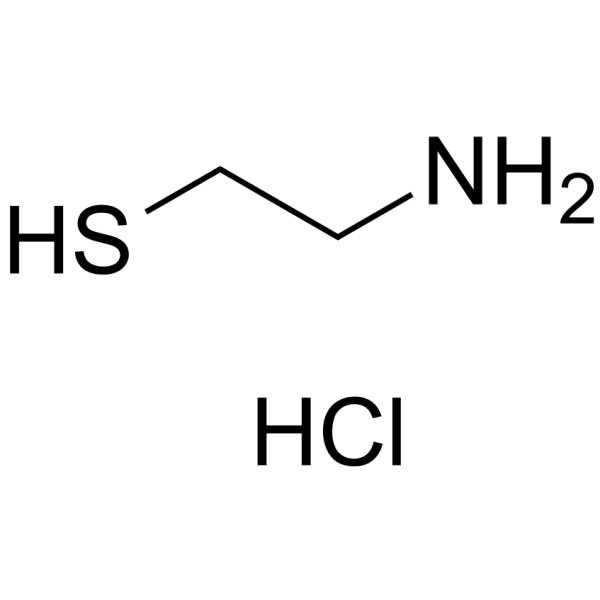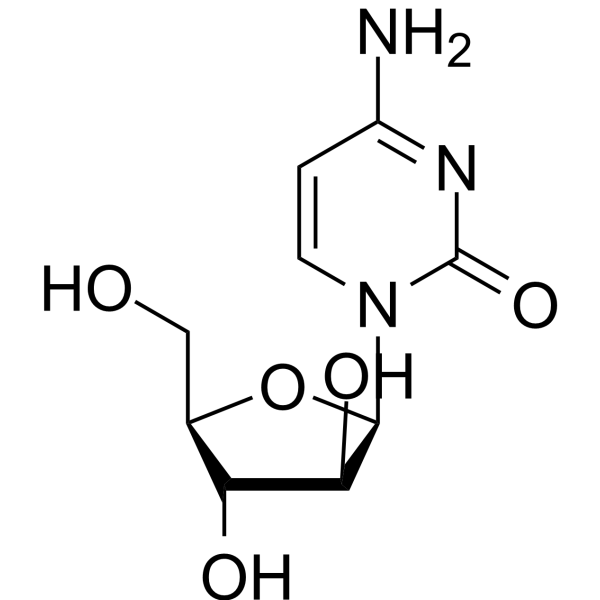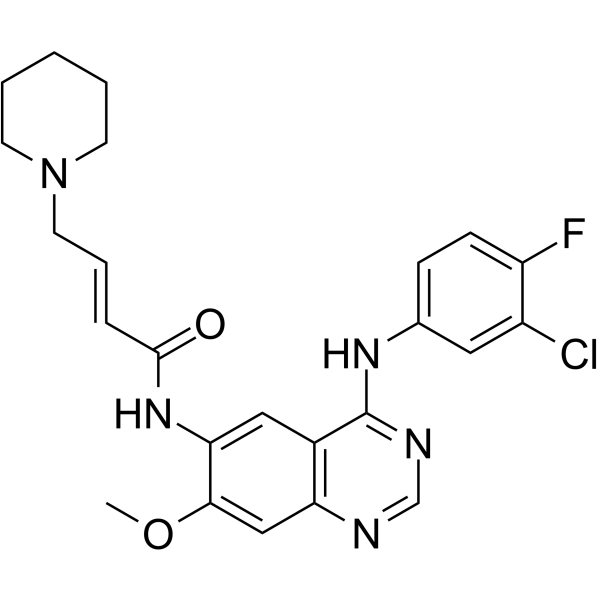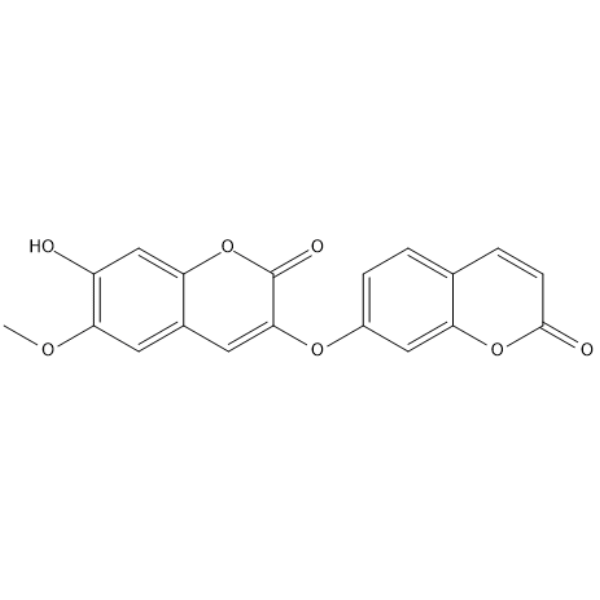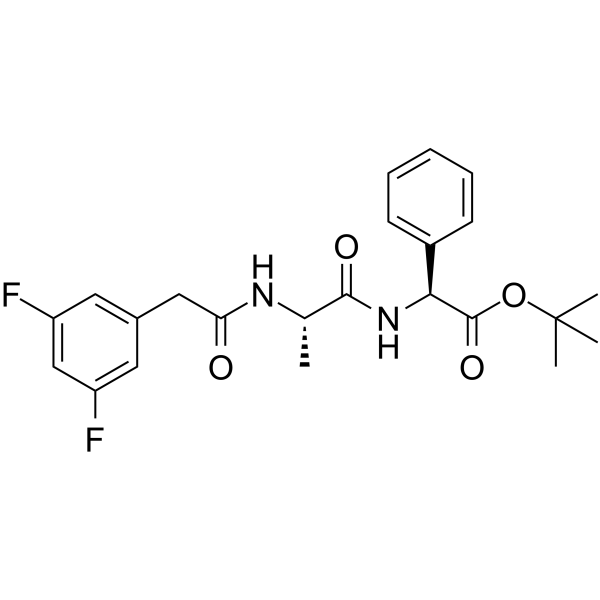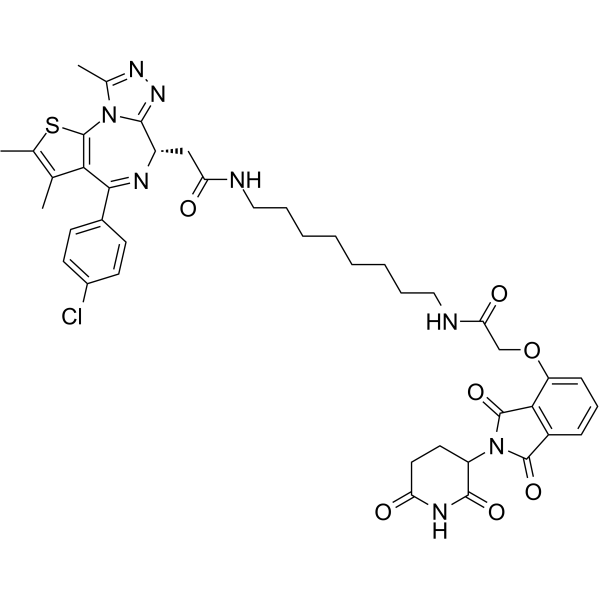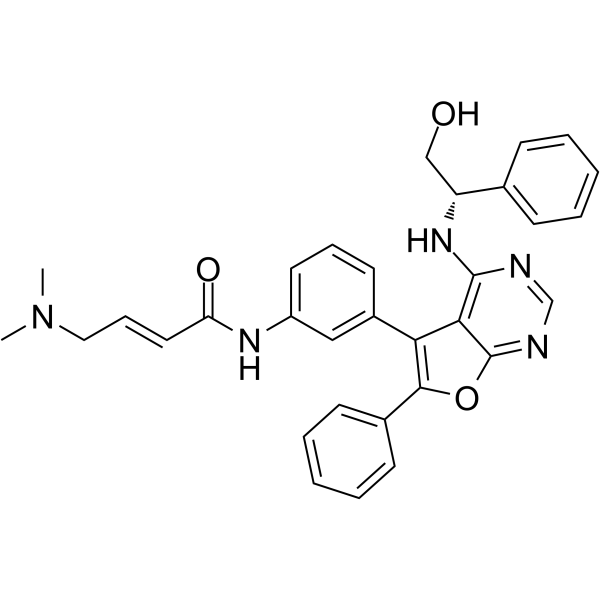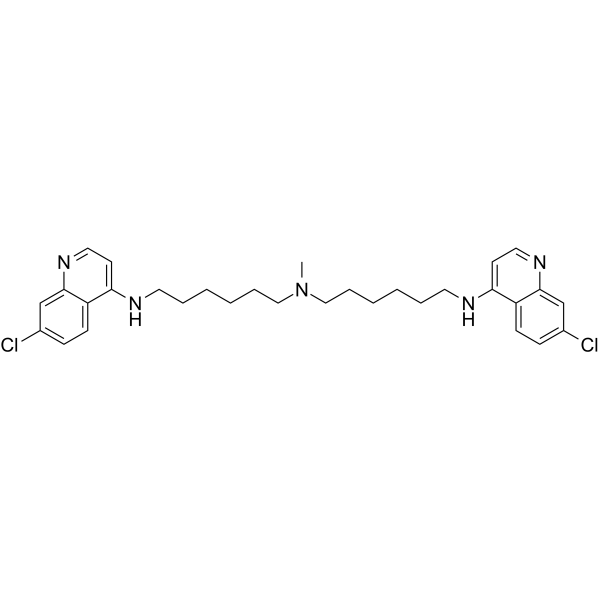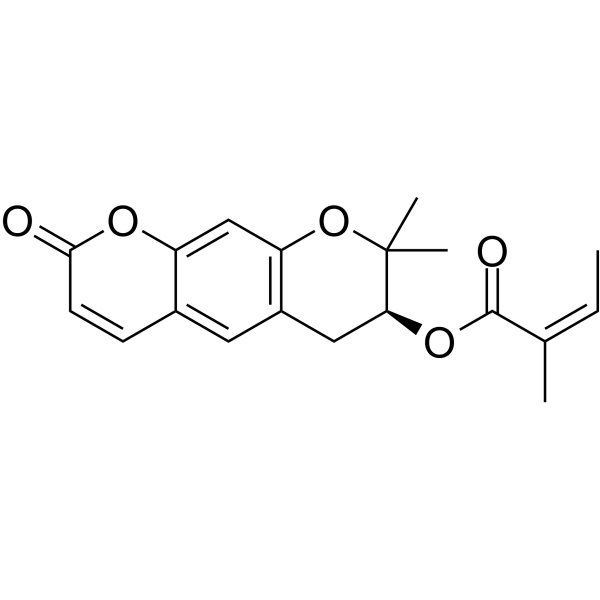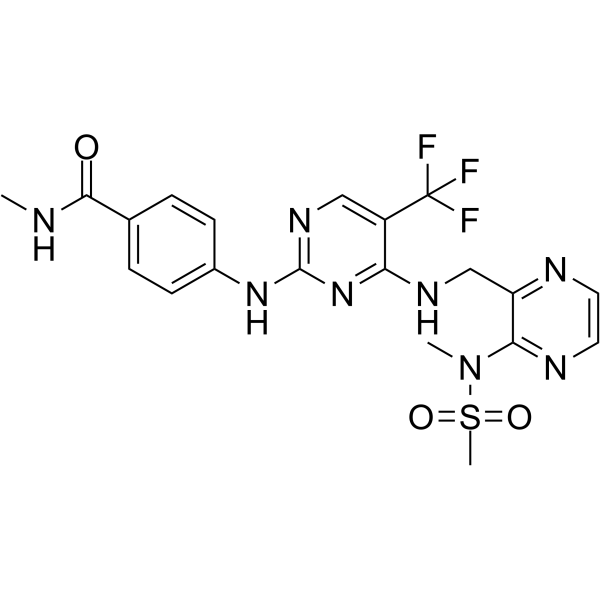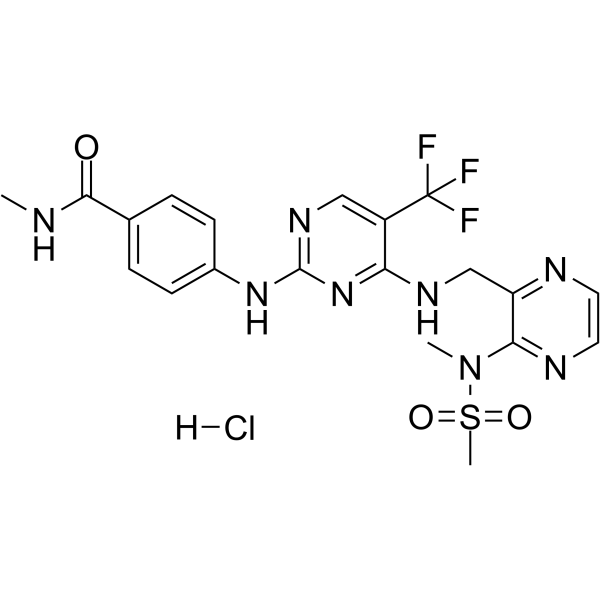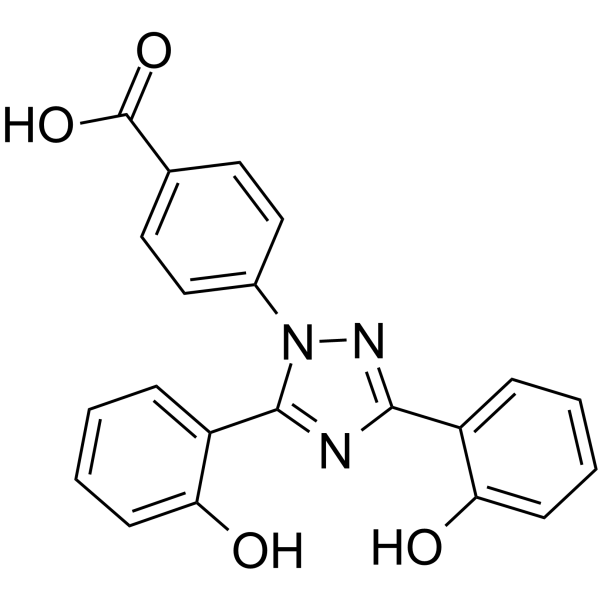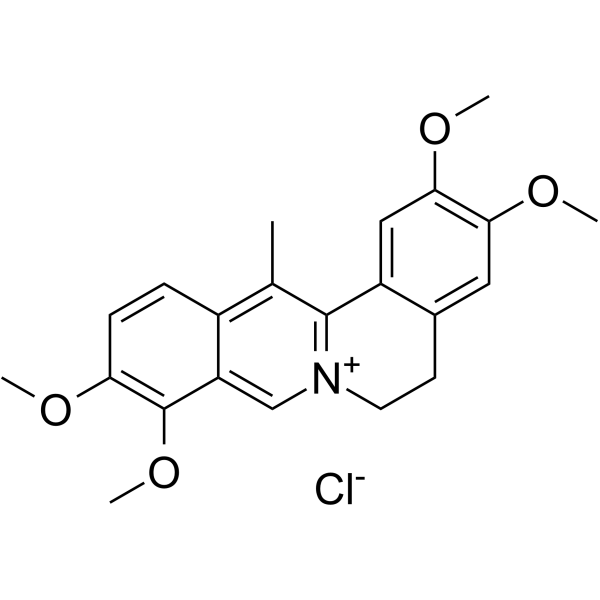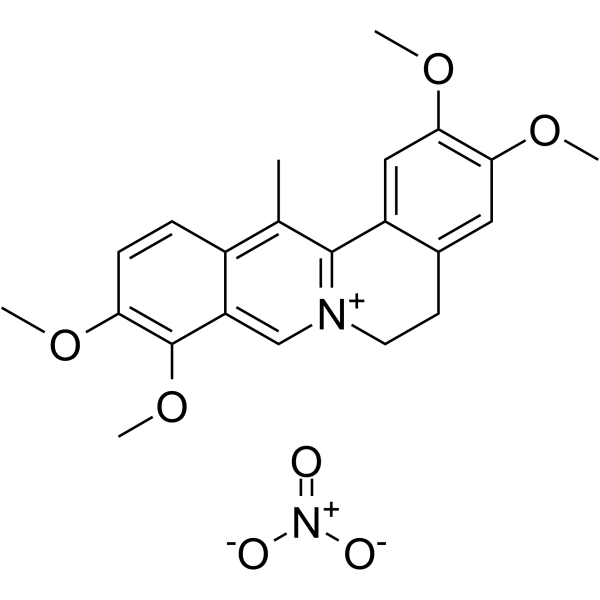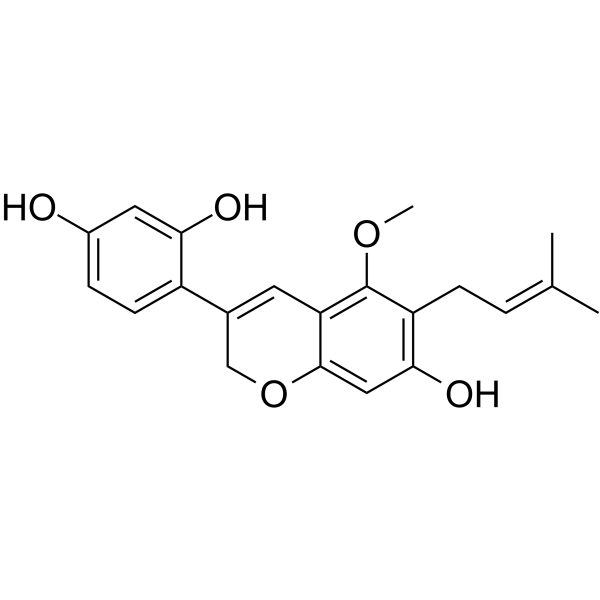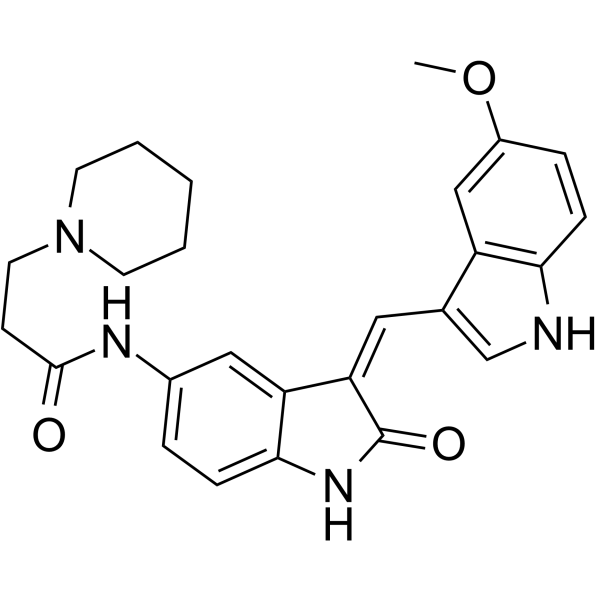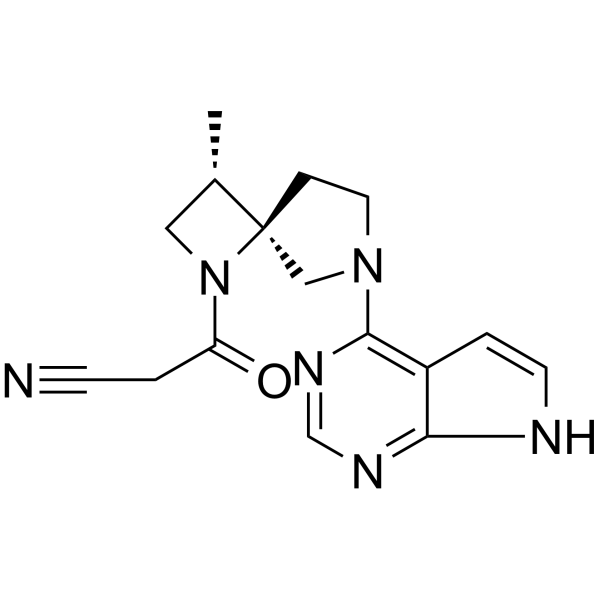|
BP10652
|
Cysteamine hydrochloride
|
|
|
|
|
Cysteamine is an agent for the treatment of nephropathic cystinosis and an antioxidant.
|
|
BP10582
|
Cytarabine
|
|
|
|
|
Cytarabine is converted to the triphosphate form within the cell and then competes with cytidine for incorporation into DNA. Because the arabinose sugar sterically hinders the rotation of the molecule within DNA, DNA replication ceases, specifically during the S phase of the cell cycle. Cytarabine is an antimetabolite analog of cytidine with a modified sugar moiety (arabinose instead of ribose). This agent also inhibits DNA polymerase, resulting in a decrease in DNA replication and repair.
|
|
BP10135
|
Dacomitinib
|
|
|
|
|
Dacomitinib(PF299804; PF-00299804) is a highly selective, orally bioavailable small-molecule inhibitor of the HER family of tyrosine kinases with IC50 of 6, 45.7 and 73.7 nM for EGFR, ERBB2, and ERBB4, respectively.
|
|
BP10074
|
Dacomitinib hydrate
|
|
|
|
|
Dacomitinib hydrate is a highly selective and second-generation small-molecule inhibitor of the pan-epidermal growth factor receptor family of tyrosine kinases. Dacomitinib specifically and irreversibly binds to and inhibits human EGFR subtypes, resulting in inhibition of proliferation and induction of apoptosis in EGFR-expressing tumor cells.
|
|
BP10935
|
Daphnoretin
|
|
|
|
|
1. Daphnoretin has strong antiviral activity, mainly on the later phase of the replication cycle. 2. Daphnoretin has anticancer effects on leukemia, osteosarcoma and uterine cervix cancer cells, might through promoting apoptosis in a mitochondria-mediated way. 3. Daphnoretin causes death of HOS cells by blocking cells successively in G2/M phases and activating the caspase-3 pathway.
|
|
BP10967
|
DAPT
|
|
|
|
|
DAPT is a novel γ-secretase inhibitor which reduces the Aβ production (IC50: 20 nM in HEK 293 cells) and Aβ42 levels (IC50: 200 nM).
|
|
BP10773
|
DBEQ
|
|
|
|
|
DBeQ(JRF-12) is a selective, potent, reversible, and ATP-competitive p97 inhibitor.
|
|
BP10895
|
dBET6
|
|
|
|
|
dBET6 is a selective and cell-permeable degrader of BET based on PROTAC (IC50: 14 nM). It has antitumor activity.
|
|
BP10258
|
DBPR112
|
|
|
|
|
DBPR112 has an IC50 of 15 nM and 48 nM for EGFRWT and EGFRL858R / T790M, respectively. It is an oral active epidermal growth factor receptor inhibitor based on furimidine. DBPR112 has significant antitumor efficacy.
|
|
BP10854
|
DC661
|
|
|
|
|
DC661 is palmitoyl-protein thioesterase 1 (PPT1) inhibitor, inhibits autophagy, and acts as an anti-lysosomal agent. Anti-cancer activity
|
|
BP10355
|
Decursinol angelate
|
|
|
|
|
Decursinol angelate has anti-tumor, anti-inflammatory, anti-oxidant, and hepatoprotective activities, it inhibits VEGF-induced angiogenesis via suppression of the VEGFR-2-signaling pathway; it also suppresses invasion and inflammatory activation of cancer cells through modulation of PI3K/AKT, ERK and NF-kappaB, its anti-inflammatory activity may contribute to its anti-cancer activity.
|
|
BP10105
|
Defactinib
|
|
|
|
|
Defactinib is an orally bioavailable, small-molecule focal adhesion kinase (FAK) inhibitor with potential antiangiogenic and antineoplastic activities.
|
|
BP10106
|
Defactinib hydrochloride
|
|
|
|
|
Defactinib hydrochloride is a novel inhibitor of FAK which inhibits FAK phosphorylation at the Tyr397 site in a time- and dose-dependent manner.
|
|
BP10931
|
Deferasirox
|
|
|
|
|
Deferasirox is an oral iron chelating agent used to treat chronic iron overload.
|
|
BP10447
|
Deferoxamine Mesylate
|
|
|
|
|
Deferoxamine is an iron-chelating agent that binds free iron in a stable complex. It also is an inhibitor of ferroptosis.
|
|
BP10094
|
Dehydrocorydaline chloride
|
|
|
|
|
Dehydrocorydaline chloride is an alkaloid with anti-inflammatory and anti-cancer activity. Can improve the activation of p38 MAPK.
|
|
BP10350
|
Dehydrocorydaline nitrate
|
|
|
|
|
1. Dehydrocorydaline(DHC) not only inhibits antibody-mediated allergic reactions but also influences cell-mediated allergic reactions, and the inhibitory effect of Corydalis Tuber on allergic reactions may be partially attributed to DHC. 2. Dehydrocorydaline can inhibit elevated mitochondrial membrane potential in lipopolysaccharide-stimulated macrophages. 3. Dehydrocorydaline has antinociceptive effects in mouse models of inflammatory pain, the effects involve the opioid receptor and inflammatory cytokines. 4. Dehydrocorydaline has anti-inflammatory activity.
|
|
BP10919
|
Dehydroglyasperin C
|
|
|
|
|
Dehydroglyasperin C is a potent NAD(P)H:oxidoquinone reductase (NQO1) and phase 2 enzyme inducer. Dehydroglyasperin C possesses potent antioxidant, cancer chemopreventive, and neuroprotective activities, it has protective effects against chronic diseases caused by reactive oxygen species as well as potential as an antioxidant food additive. Dehydroglyasperin C protects neuronal cells against glutamate-induced oxidative injury through the induction of HO-1 expression, which is, in turn, activated maybe through Nrf2-Keap1 and PI3K/AKT signaling pathways.
|
|
BP10813
|
DEL-22379
|
|
|
|
|
DEL-22379 is a water-soluble ERK dimerization inhibitor with IC50 of ~0.5 μM.
|
|
BP10324
|
Delgocitinib
|
|
|
|
|
Delgocitinib is a novel and specific inhibitor of JAK (IC50s: 2.8, 2.6, 13 and 58 nM for JAK1, JAK2, JAK3 and Tyk2, respectively) .
|
